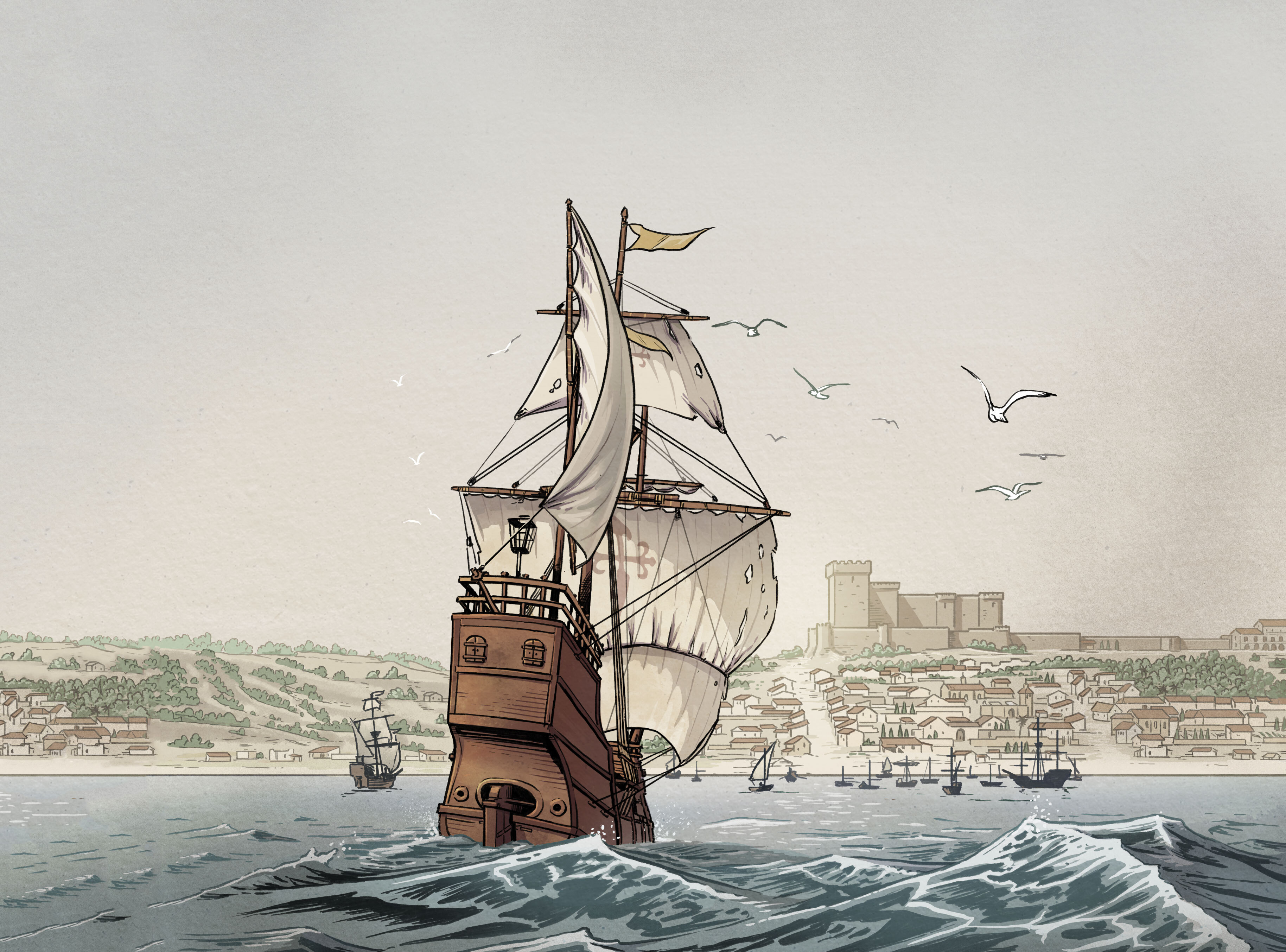Follow the troubled path of the first voyage around the world
On the 500th anniversary of the first circling of the globe, the journey remains murky. Only one of five ships completed the expedition—and Ferdinand Magellan wasn’t on it.

The tattered Victoria limps home to a Spanish port after unintentionally circling the globe. Illustration by Matthew Twombly
In the fall of 1522, a leaky ship made port in Spain with 18 haggard crewmen, all that survived of some 240 who’d manned a bold, mercantile mission. Charles I, the young Spanish king, no longer was willing to rely on overland trade routes for the cloves and nutmeg so coveted in Europe. He commissioned an expedition to find a new route to Pacific islands rich with spices, and as captain he hired Ferdinand Magellan, a skilled Portuguese sailor who firmly believed the Earth was round, a theory not yet proved.
The armada was to find a westward route to the Moluccas, or the Spice Islands, and return the same way. Leaders were to honor treaty lines approved by the pope, dividing global exploration rights between Spain and Portugal. They also were to focus on trade routes and refrain from conquest and proselytizing. Magellan would violate the mandate, with disastrous and historic results. In September 1519, five ships set sail, outfitted to collect nearly 550 tons of spices in two years.
The voyage stretched to three years, as sailors charted routes by the sun and stars. They survived with help from Indigenous people they met, treating some fairly but others cruelly or violently. Forsaking trade for conquest, Magellan attacked an island in the Philippines and was killed in the surf. That left a new captain, Basque navigator Juan Sebastián Elcano, to guide the Victoria home to Sanlúcar de Barrameda. The ship returned with a fraction of the trip’s intended cargo and an unplanned achievement: proof that the Earth was round.
This first circumnavigation of the globe—a singular feat of exploration and science— changed the world forever, sparking globalization, the spread of Christianity, and abuses of colonization for centuries to come.
Illustrations: Matthew Twombly. Sources: Elkano 500 Foundation; Jose Eleazar R. Bersales and George Emmanuel R. Borrinaga, University of San Carlos; Guadalupe Fernández Morente, Fundación Nao Victoria
This story appears in the September 2022 issue of National Geographic magazine.